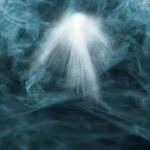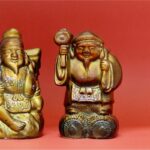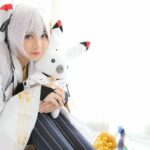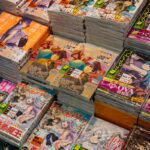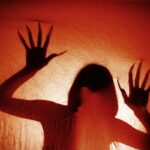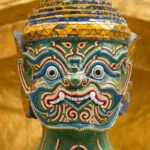One of the most famous Japanese anime movies of all time is Studio Ghibli’s Spirited Away. It was a moving tale about a young girl who accidentally enters the world of spirits from Japanese Shinto folklore.
Not only was the movie beautifully animated but it also introduced a lot of people to some of the mythology and culture of Japan.

As a result, a lot of people found out about kami and yokai from Spirited Away. These Japanese spirits are everywhere in Spirited Away. Some have large roles, others have small cameos – but which yokai make an appearance?
Here are 15 different Japanese yokai who make cameo appearances in the 2001 masterpiece Spirited Away. Check them all out below and see how many you spotted during your first viewing!
1. Tsuchigumo
The tsuchigumo are a type of yokai from Japanese folklore. They are also known by several other names such as yatsukahagi or ogumo. They appear in artworks as giant, spider-like monsters but their appearance in Spirited Away is very different.
The tsuchigumo were the inspiration behind the character of Kamaji, the multi-limbed boiler man. Of course, there’s nothing monstrous about Kamaji (apart from his multiple arms).
He is an ally to Chihiro and shows her kindness although he can be a little gruff at times.
2. Namahage
These yokai only appear very briefly in Spirited Away, as a group of spirits who are entering the bathhouse when Chichiro first arrives. In the movie, these are the Onama-Sama. They wear capes of leaves, have large heads, and tusk-like teeth.
The Onama-Sama share a lot of similarities to the Namahage. Those are yokai from the Oga Peninsula with ogre-like faces and straw capes. Today, Namahage appear during New Year’s rituals and celebrations.
Their appearance in Spirited Away is only a brief cameo.
3. Shikigami
The shikigami make a big cameo in Spirited Away as the paper birds controlled by Zeniba. They attack Haku after he raid’s Zeniba’s residence to steal from her under the orders of Yubaba.
They cause serious harm to Haku and end up causing many cuts and wounds to him as revenge.
In Japanese folklore, the shikigami are invisible yokai which only ever show themselves in the form of paper manikins. They are servant spirits. This explains why they are under the control of Zeniba and act as her security for her home.
4. Yama-Uba
This variation of a classic yokai in Japanese folklore makes its cameo in a big way!
The Yama-uba inspired the villainous character Yubaba. The Yama-uba are a type of yokai that appear as mountain crones or old hags (see also ‘Can A Human Become A Yokai? – What You Need To Know‘). Tales tell of their cannibalistic nature and they are often compared to witches in western cultures.
This makes them the perfect yokai to base the main villain, Yubaba, from. Yubaba is a greedy, selfish crone who runs the bathhouse and treats her workers poorly.
On the other hand, the character Zeniba is also based on the Yama-uba as she is Yubaba’s sister. Despite this, Zeniba is a kind character who is an ally to Chihiro and the complete opposite of her sister in personality.
5. Noppera-Bo
One of the most iconic characters to come from Spirited Away is No-Face. No-Face is the spirit who follows Chihiro around and ends up eating most of the bathhouse staff.
It dresses in black, appears transparent at some points, and has a white mask. It is voiceless, only speaking with the voices of others.
There’s a lot of debate around the meaning of No-Face and its inspiration but many believe that it is a type of yokai known as the Noppera-Bo.
The Noppera-Bo are faceless yokai who try to trick people but are harmless. This is a bit different from No-Face who grows angry during the movie and chases Chihiro and eats some of the bathhouse staff.
It does return to its usual timid self by the end of the movie, thanks to Chihiro and her emetic dumpling.
6. Ushi-Oni
The Ushi-Oni are a type of yokai from western Japan. They are also known as the gyuki and are mostly depicted as beasts with cow-like heads. They make a very brief appearance in Spirited Away as guests to the bathhouse.
7. Oshira-Sama
This Japanese deity makes a brief appearance in Spirited Away. Although, American audiences will know this spirit as the Radish Spirit. It is a visitor at the bathhouse and is a tall, large, and very pale creature.
You can see it taking up all the space in the elevator – forcing more Chichiro to squeeze her way in.
In truth, the Oshira-Sama we see in Spirited Away more closely resembles the dolls linked to it rather than the spirit itself. Despite this, the original Japanese version of Spirited Away refers to the spirit as Oshira-Sama.
8. Tsukumogami
This type of yokai is a very strange one as they appear as objects acquired or possessed by spirits. In Spirited Away, the tsukumogami make a very brief cameo as the hopping lanturn which guides Chihiro and No-Face to Zeniba.
The iconic Pixar lamp could have also inspired the hopping lantern as they both act in similar ways. As Spirited Away takes a lot of inspiration from yokai and kami, it is more likely that this is a tsukumogami.
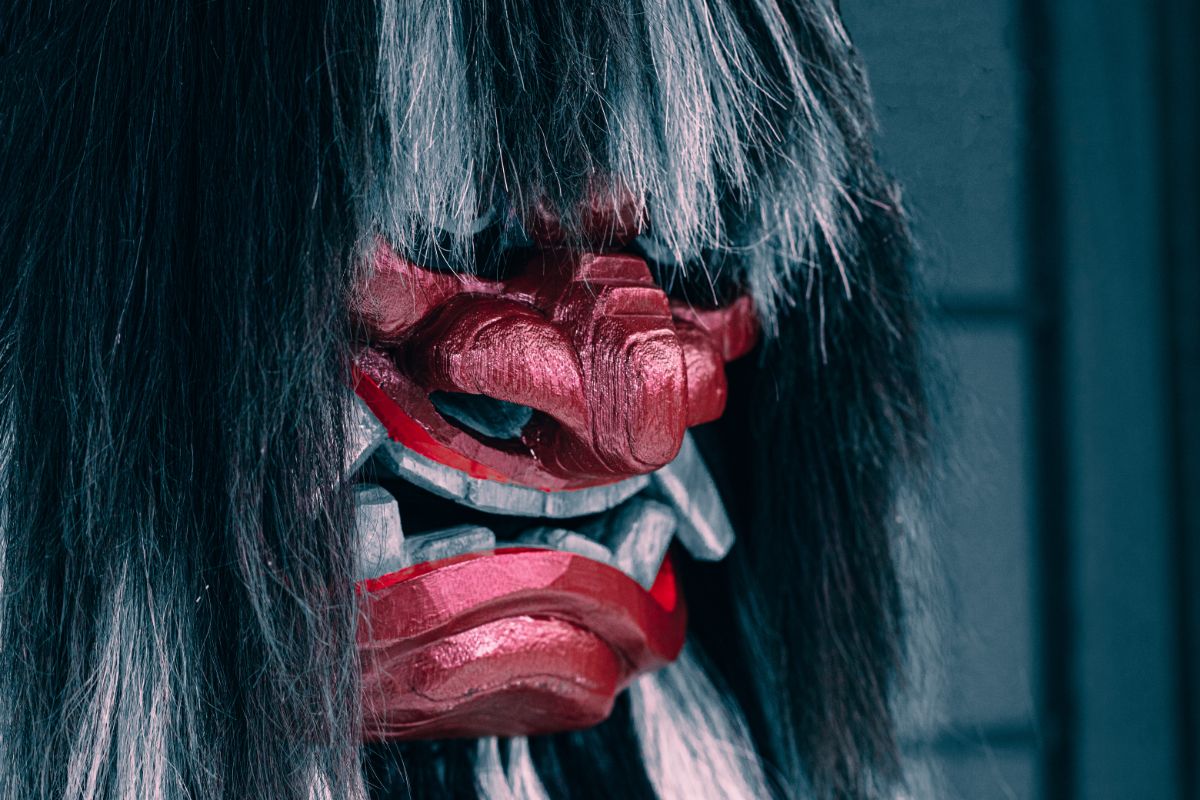
9. Mizuchi
In Japanese folklore, Mizuchi are water dragons and are loosely linked to water deities. In Spirited Away, the Mizuchi serves as part of the inspiration behind the character of Haku.
The Mizuchi in Spirited Away is Haku. He is also the spirit of the Kohaku river.
When Chihiro was a child, she once fell into the Kohaku river but was safely washed ashore. This is why she and Haku have such a close connection.
10. Kappa
Another type of water spirit in Spirited Away is the kappa.
Kappa are reptilian humanoids that live in aquatic environments in Japan. They thrive in the water, and require a lot of respect and worship – or they can become nasty! In Japanese folklore, their favorite meal is the cucumber.
The Kappa make an appearance in Spirited Away as the mysterious river spirit Chihiro must run a bath for.
The river spirit stinks out the whole bathhouse. Later, Chihiro soon realizes that the spirit is hurting from all the pollution trapped within it.
11. Kintaro
Kintaro is less of a Japanese yokai and more of a figure in folklore tales, but he still makes an appearance in Spirited Away. In Japanese folklore, Kintaro is a superhuman child raised by a yama-uba.
This served as the inspiration for the character of Boh, Yubaba’s giant baby son. Boh is very strong due to his size and is being raised by Yubaba, who is also inspired by the yokai yama-uba.
Although Kintaro is a Japanese hero, Boh is very cruel and spoiled – until he goes on a sort of redemption arc through the movie.
12. Otori-Sama
During the bathhouse scenes in Spirited Away, you may spot these chick-like figures. They walk around and squeeze into bathtubs together. These chicks are actually cameo yokai making an appearance.
The Otori-Sama are spirits that resemble chickens and so, they have an adorable chick-like appearance in Spirited Away.
13. Umi-Bozu
When Chichiro first appears in the spirit’s realm, she sees multiple different shadows appear in the town as it comes to life. These dark shadows are the yokai Umi-Bozu – sea spirits which appear as dark shapes or outlines with white glowing eyes.
Their cameo in Spirited Away is relatively minor but they also serve an important signal for the story. In folklore, Umi-Bozu appear when a calm sea becomes tumultuous.
This is just like how Chichiro’s life changes when her parents turn into pigs.
14. Kasuga-Sama
Kasuga-sama are a type of yokai which make a brief appearance on the boat that approaches the bathhouse in the beginning of the movie. At first, they are invisible and you can only see the paper masks they wear.
They soon appear as cloaked figures. They have a close link to the Kasuga shrine in Japan and are likely kami that represent this shrine in Spirited Away.
15. Susuwatari
The susuwatari are tiny soot sprites that appear in the boiler room. They are a type of yokai that have been completely invented by Spirited Away’s creator, Hayao Miyazaki.
There are no yokai from Japanese folklore similar to this type of yokai, but they are yokai nonetheless. They take inspiration from the general idea and tales of yokai overall – ghosts or spirits that roam Japan.
The susuwatari also make an appearance in other Ghibli movies like My Neighbor Totoro – see if you can spot them!
Final Thoughts
Yokai and kami play important roles in the story of Spirited Away. They are integral to the plot as Chichiro ends up in their world.
As a result, there are many different types of yokai which make appearances and cameos.
Some yokai have larger roles than others, and some better resemble their inspiration. Watch the movie and see if you can spot all the yokai mentioned above!
- How Much Money Can You Make Teaching English in Japan? - December 12, 2022
- The Best Places to Teach English in Japan - December 9, 2022
- The Best Credentials for Teaching English in Japan - December 8, 2022

